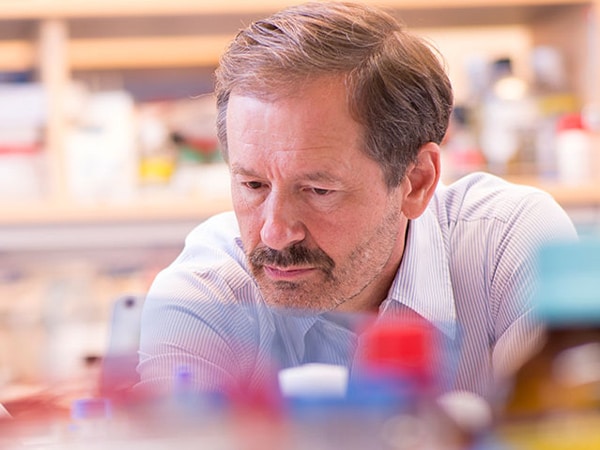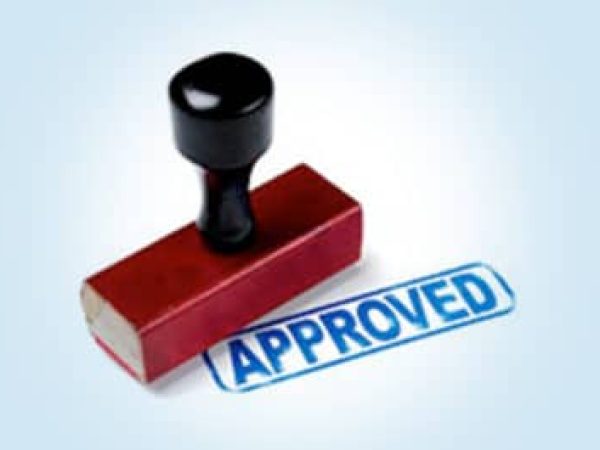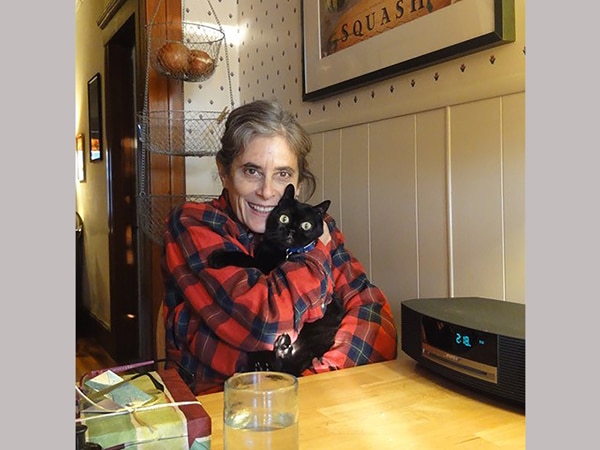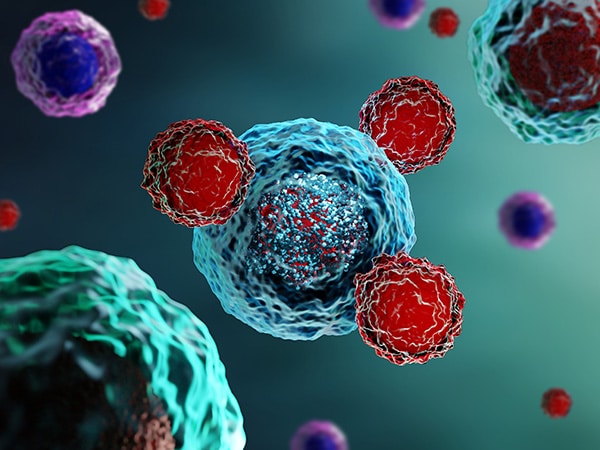Steve Herz: A 17-year Journey with Multiple Myeloma
When Stephen’s cancer relapsed in 2010, he turned to a clinical trial of a new immunotherapeutic for his disease.
While Stephen Herz was trying to teach his daughter to ice skate in February 1998, he fell and shattered his hip. That’s how the New Yorker’s nearly two-decade-long cancer journey began.
He was 43 years old at the time.
“If you’re 43, your hip shouldn’t be broken into 17 pieces, especially from a public skating session,” Stephen said.
Diagnosed with stage 3 multiple myeloma, Stephen had numerous lytic bone lesions? a common problem for patients with this form of cancer? in which the bone appears to have be eaten away.
Given a poor prognosis at the hospital where he first received treatment, Stephen searched for alternatives and was guided to Dr. Kenneth C. Anderson, MD, director of the Jerome Lipper Multiple Myeloma Center and LeBow Institute for Myeloma Therapeutics at the Dana-Farber Cancer Institute in Boston.
After an email exchange, Stephen traveled from New York to Boston for an appointment with Dr. Anderson and the team at Dana-Farber.
“I said, ‘So, what are we going to do?’ and he said, ‘You need a stem-cell transplant.’ And he gave me a five-year plan and his exact words were, ‘If we can’t cure you, we?ll come up with the next best thing to keep you going until we find something to get you positive results,'” Stephen recalled.
He received the stem-cell transplant in November 1999. It was followed by months of recovery that required isolation to avoid exposure to germs that would have been dangerous for him with his compromised immune system.
“Then everything was good until 2010,” he said.
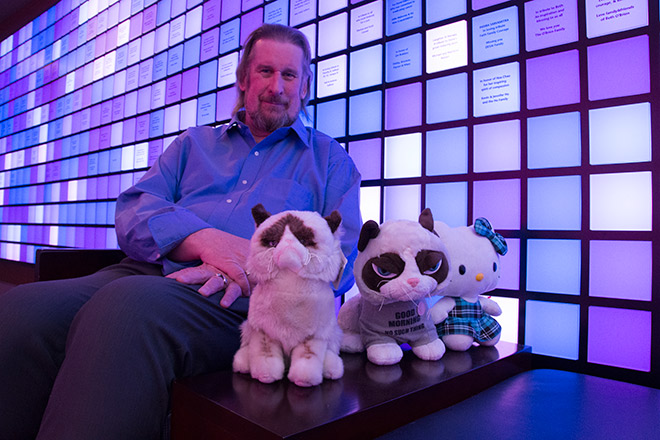
That’s when Stephen drove a friend to the hospital for an appointment. While he was there, he called his physician at the time – Dr. Paul Richardson, director of clinical research at the Jerome Lipper Multiple Myeloma Center.
“I said, ‘I feel fine, but I haven?t seen you for a while and I’m here; do you want to run a blood test?'” he said.
Three days later, Dr. Richardson called Stephen and told him there was a problem and he needed to return to Boston. He was back where they had started 12 years earlier – stage 3 multiple myeloma.
At the same time, Dr. Richardson offered hope: a clinical trial of a new investigational immunotherapeutic called elotuzumab (Empliciti), which was being tested with a combination of other medications.
For the first two years, Stephen’s M-spike? a measure doctors use to assess whether a patient’s multiple myeloma is responding to treatment?bounced up and down. Then Dr. Richardson added intravenous immunoglobulin to the elotuzumab therapy and his M-spike started dropping.
“After that my numbers were rock solid, on a steady stream straight down,” Stephen said. “That was the turning point. We got down to 0.2 on the M-spike and I had been up as high as 2.34 at one point. And everything just kept going down and going down and down.”
Upon reaching 0.2, Stephen underwent a bone marrow biopsy to check for the disease.
“They couldn’t find a trace of the cancer in my body,” he said.
Each year more than 30,000 people in the United States are diagnosed with myeloma, according to federal estimates. Stephen feels that support of cancer research is key to finding innovative new therapies for those people and the nearly 1.7 million people diagnosed with cancer each year in this country.
The AACR was saddened to learn that Stephen died since this article was published. We are deeply grateful to him for sharing his cancer experience with the AACR. We offer our heartfelt condolences to his family and friends.
